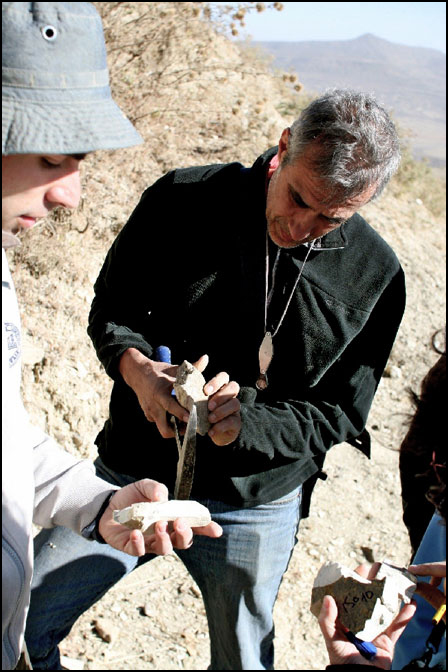https://eos.org/articles/the-eternal-nile-is-even-more-ancient-than-we-thought
The Eternal Nile Is Even More Ancient Than We Thought
Deep-mantle flow helps maintain the river's steady course.

The Nile River flowing through Cairo, Egypt. Most of Egypt's population lives along the Nile corridor. Credit: Nina R., CC BY 2.0
If you had traveled the length of the Nile River 30 million years ago, you would have followed much the same 6,650-kilometer course that you would today. The river has been flowing from its headwaters in the Ethiopian Highlands to its mouth in the Mediterranean Sea for about 6 times longer than previously thought, its course held steady by deep-mantle currents that mirror the Nile's northward flow.
The geological evolution of the Nile River is complicated, said Thorsten Becker, a geophysicist at the University of Texas at Austin (UT Austin) and a coauthor on a new study published in Nature Geoscience. At least five ancestral rivers have flowed north from the Ethiopian Highlands since the Miocene. "When the river we now know as the Nile formed has been debated for some time," Becker said.
Lead author Claudio Faccenna, also at UT Austin, and colleagues took a deeper approach to deciphering the Nile's ancient history by connecting the gently tilting landscape along the river's course to a conveyor belt of mantle rock that wells upward in the south under the Ethiopian Highlands and pulls downward on the Earth's crust under the Mediterranean, keeping the Nile on a consistently northward course.The idea that mantle flow patterns can influence surface topography is not new, but the sheer scale of the Nile River drainage offers a unique opportunity to study large-scale surface expressions of this mantle-landscape interaction, Becker said. "Because the river is so long, it offers a unique opportunity to study these interactions on a landscape-wide scale."
The team first traced the geologic history of the Nile by correlating ancient volcanic eruptions in the highlands with massive deposits of river sediments transported to the Nile Delta. By combining these observations, the team was able to determine that the Ethiopian Highlands rose dramatically around 30 million years ago and have remained relatively unchanged ever since, supported by a steady upwelling of hot mantle below the mountain range.
The researchers then verified their findings using computer modeling to simulate the past 40 million years of plate tectonic activity in eastern Africa, an extremely active region due to the East African Rift system. The models indicate that a stationary mantle plume that created the highlands evolved into a sustained south to north flowing conveyor belt of mantle that mirrors the south to north gradient of the river. The topography simulated by the model was "strikingly similar" to the course of the actual Nile, Becker said, down to the locations of the famous Cataracts of the Nile—a series of six rock-choked rapids between Khartoum, Sudan, and Aswan, Egypt."This study links a pretty diverse set of geologic observations and embeds those findings into a state-of-the-art flow model for the mantle," said Eric Kirby, a geophysicist at Oregon State University who was not involved in the new study. "It's a very compelling combination of techniques."

"Over the past decade or two, understanding how the deep Earth influences the surface has been a burgeoning field," Kirby said, "driven by increasingly high resolution seismic images and advances in our understanding of how to relate seismic images to properties that govern mantle flow, such as temperature, viscosity, and composition."
More work will need to be done to further decipher the mysteries of the Nile, said Bob Stern, a geoscientist at the University of Texas at Dallas who was not involved in the new study. An interesting next step could involve focusing the new techniques on the Nubian Swell, a region of structural uplift that runs east to west across the river, creating the Cataracts of the Nile, Stern said.
"The Nubian Swell is a mysterious area that shows no signs of igneous activity, and yet the mantle has to be responsible for that uplift somehow," he said. The uplift also is likely to have occurred more recently than 30 million years ago because the rocky cataracts would have been worn down by the powerful river in that much time, he said. "It's a hard place to understand just by looking at the surface expression," Stern said. "We need to look deeper."
Becker and colleagues are also planning to use their new observational and modeling techniques to look at mantle activity under other large rivers, such as the Congo and Yangtze Rivers. "We're hoping to develop techniques of reading the topography that help us fingerprint the underlying deep-mantle processes," he said. "How does the mantle shape the landscape over time? What are the geological and geophysical constraints? These are some of the big picture questions we're trying to answer."—Mary Caperton Morton (@theblondecoyote), Science Writer
-- Sent from my Linux system.
No comments:
Post a Comment